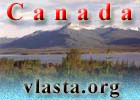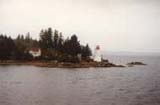Although Canada is the second largest country on earth, 90 per cent of its population is concentrated in the area near its border with the United States. Great tracts of land further north therefore remain uninhabited and largely unaffected by human activity.
The name Canada comes from a word meaning “village” or “community” in one of the indigenous Iroquoian languages. Indigenous peoples had developed complex societies and intricate political relations before the first Europeans, the Vikings, arrived in the 11th century. Canada was first inhabited by descendants of the Mongoloid peoples of Asia who migrated to North America probably during the Pleistocene Ice Age (about 15,000 years ago), via the Bering Strait, then a land bridge. Today, nearly 350,000 Native Americans and 25,000 Inuit live in Canada. Most Native Americans live on the country’s 2,200 reservations. The Inuit, who reside mainly in far northern towns, taked control of a vast area in the Northwest Territories in 1999 and established an Inuit national homeland called Nunavut there.

About 37 per cent (10.1 million) of the people of Canada live in Ontario, the most populated province; about 25 per cent (6.93 million) live in Québec; and about 28 per cent (7.9 million) inhabit the combined region of the Prairie Provinces (Manitoba, Saskatchewan, and Alberta), British Columbia, and the Yukon Territory and Northwest Territories. In Québec about 83 per cent of the people are of French descent and about 10 per cent are of British origin.



